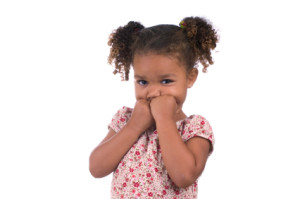It’s September and school is starting or has already started from many children around the Commonwealth of VA.
This time of year creates a lot of mixed emotions. Many children are excited to go back to school, happy to see friends and proud to move up to the next level in school. For some children however, they may have feelings of sadness that the summer is over, they may be nervous about what their teacher will be like, scared that they won’t know anyone in their class or anxious about starting school in general.
Likewise, many parents are excited for their children, nervous, scared, worried, sad and happy that their children are returning to school.
All of these feelings are normal. However, this time of year brings a lot of anxiety for children. Anxiety in children often looks different in a child then it does for an adult. Children don’t always know they are experiencing anxiety. Anxiety can often come out in their behavior or as a physical symptom. Around 5-10% of children struggle with an anxiety disorder. The onset of clinical anxiety is typically around six years old, usually at the same time children start school full-time; symptoms can escalate around age 10.
These symptoms include: (from Anxiety.org)
• Agitation
• Restlessness
• Inattention, poor focus
• Somatic symptoms like headaches or stomachaches
• Avoidance
• Tantrums
• Crying
• Refusing to go to school
• Meltdowns before school about clothing, hair, shoes, socks
• Meltdowns after school about homework
• Difficulties with transitions within school, and between school and an activity/sport
• Difficulty settling down for bed
• Having high expectations for school work, homework and sports performance.
Essentially, anxiety in children tends to manifest as negative behaviors that you may have glimpsed briefly in the past, but that are becoming consistent and intense.
There are many different types of anxiety:
Generalized Anxiety Disorder
If your child has generalized anxiety disorder, or GAD, he or she will worry excessively about a variety of things such as grades, family issues, relationships with peers, and performance in sports.
Children with GAD tend to be very hard on themselves and strive for perfection. They may also seek constant approval or reassurance from others. Generalized anxiety disorder (or GAD) affects about three to five percent of youth and often occurs with one or more of the other types of anxiety
Separation Anxiety Disorder
Separation anxiety disorder is common between 18 months and 3 years old.
If your child is slightly older and unable to leave you or another family member, or takes longer to calm down after you leave than other children, then the problem could be separation anxiety disorder, which affects 4 percent of children. This disorder is most common in kids ages seven to nine.
When separation anxiety disorder occurs, a child experiences excessive anxiety away from home or when separated from parents or caregivers. Extreme homesickness and feelings of misery at not being with loved ones are common.
Other symptoms include refusing to go to school, camp, or a sleepover, and demanding that someone stay with them at bedtime. Children with separation anxiety commonly worry about bad things happening to their parents or caregivers or may have a vague sense of something terrible occurring while they are apart.
Social Anxiety Disorder
Social anxiety disorder, or social phobia, is characterized by an intense fear of social and performance situations and activities such as being called on in class or starting a conversation with a peer.
This can significantly impair your child’s school performance and attendance, as well as his or her ability to socialize with peers and develop and maintain relationships.
Selective Mutism
Children who refuse to speak in situations where talking is expected or necessary, to the extent that their refusal interferes with school and making friends, may suffer from selective mutism.
Children suffering from selective mutism may stand motionless and expressionless, turn their heads, chew or twirl hair, avoid eye contact, or withdraw into a corner to avoid talking.
These children can be very talkative and display normal behaviors at home or in another place where they feel comfortable. Parents are sometimes surprised to learn from a teacher that their child refuses to speak at school.
The average age of diagnosis is between 4 and 8 years old, or around the time a child enters school.
Specific Phobias
A specific phobia is the intense, irrational fear of a specific object, such as a dog, or a situation, such as flying. Common childhood phobias include animals, storms, heights, water, blood, the dark, and medical procedures.
Children will avoid situations or things that they fear, or endure them with anxious feelings, which can manifest as crying, tantrums, clinging, avoidance, headaches, and stomachaches. Unlike adults, they do not usually recognize that their fear is irrational.
Obsessive-Compulsive Disorder (OCD)
OCD is characterized by unwanted and intrusive thoughts (obsessions) and feeling compelled to repeatedly perform rituals and routines (compulsions) to try and ease anxiety.
Most children with OCD are diagnosed around age 10, although the disorder can strike children as young as two or three. Boys are more likely to develop OCD before puberty, while girls tend to develop it during adolescence.
You can get more information at http://www.adaa.org/living-with-anxiety/children/childhood-anxiety-disorders
According to the Association for anxiety and depression, if an anxiety disorder is causing your child to struggle at school academically or socially, the first step is to talk to the teacher, principal, or counselor about your concerns. The key to helping a child thrive is early intervention. After an anxiety disorder diagnosis, Art therapy and play therapy can be helpful as well as cognitive behavior therapy (or CBT).
For more information or to have your child evaluated you can contact Crossroads Family Counseling Center, LLC.
